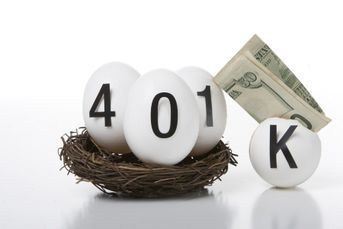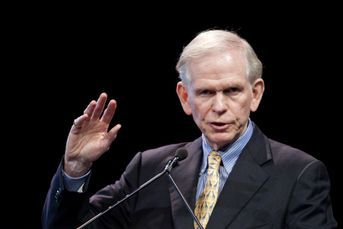Fed chief Yellen sees few risks to divert from QE tapering
Says surprised by reports of weaker job growth, wants to see more data.
Janet Yellen, taking charge as Federal Reserve chairman, let lawmakers know she’s united with her policy committee and sees few risks that could derail a plan to steadily reduce the Fed’s bond purchases.
Ms. Yellen, testifying to the House Financial Services Committee Tuesday, said she was surprised by reports showing weaker job growth yet wants to see more data before assessing the health of the labor market. Global financial-market turbulence doesn’t pose a major risk to the U.S. economy, she said, and inflation is likely to move up toward the Fed’s 2% target — even after missing it for almost two years.
“It seemed like it was a long, hard decision to start tapering, and I think they’re loath to stop it unless they have a good reason,” said Dana Saporta, director of U.S. economic research at Credit Suisse Securities in New York. “Unless we have a longer period of disappointing data or greater market turbulence, the Fed is still on track to taper” asset purchases by $10 billion per meeting.
Stocks rallied as Ms. Yellen predicted moderate growth and declining unemployment. The 67-year-old chairman, who emphasized continuity with the policies she helped craft as deputy to her predecessor, Ben S. Bernanke, will now lead a retreat from the unprecedented stimulus that has swelled the Fed’s balance sheet to $4.1 trillion.
The Fed last month announced its second consecutive $10 billion reduction to its bond purchase program, to $65 billion, citing progress toward its goal of maximum employment. The third round of the Fed’s quantitative easing began in September 2012.
‘MEASURED STEPS’
Ms. Yellen Tuesday repeated the Fed’s plan to scale back stimulus in “measured steps” and said that only a “notable change in the outlook” for the economy would prompt a change of course. She also said “it’s important for us to take our time to assess” the significance of recent reports showing payrolls expanded less than projected.
“She doesn’t want to rock the boat,” said Julia Coronado, chief economist for North America at BNP Paribas in New York. “She knows that in a world where the Fed relies on communication they need that credibility. She doesn’t want to be jarring.”
In a hearing that lasted for more than five hours, Ms. Yellen broke with precedent by answering every question, prompting Spencer Bachus, a Republican from Alabama, to say the committee was “appreciative” of her time. The first woman chairman in the Fed’s 100-year history, she beamed when James Himes, a Connecticut Democrat who said he grew up with two sisters and now has two daughters, congratulated her for the achievement.
Ms. Yellen was pressed for her views on issues ranging from financial regulation and the budget deficit to coal prices and income inequality. She took care to avoid wading into partisan debates on subjects like the impact of the Affordable Care Act on the labor market.
The Standard & Poor’s 500 Index (SPX) climbed 1.1% to 1,819.75 at the close of trading Tuesday in New York, capping its best four-day rally in 13 months. Treasuries declined, pushing the yield on the 10-year note up six basis points, or 0.06 percentage point, to 2.73%.
On the path of the federal funds rate, Ms. Yellen also stayed close to the Federal Open Market Committee’s recent statements. Fed officials have said they wouldn’t consider raising the benchmark lending rate so long as unemployment stays above 6.5% and the outlook for inflation is no more than 2.5%.
BABY BOOMERS
A wave of retiring baby boomers has reduced participation in the labor force faster than many economists forecast, resulting in lower unemployment rates. In December, the committee hedged its labor-market threshold, saying that the benchmark lending rate is likely to remain around zero “well past the time that the unemployment rate declines below 6.5%.”
Unemployment fell to 6.6% in January, the lowest level since October 2008, and Fed officials are considering how to put more qualitative guidelines around the threshold.
Ms. Yellen took a first step Tuesday, saying in her written remarks that the “recovery in the labor market is far from complete.”
“Those out of a job for more than six months continue to make up an unusually large fraction of the unemployed, and the number of people who are working part time but would prefer a full-time job remains very high,” she said in her written remarks. “These observations underscore the importance of considering more than the unemployment rate when evaluating the condition of the U.S. labor market.”
Ms. Yellen’s high bar both for altering the pace of tapering bond purchases and for raising the benchmark lending rate puts her in line with the center of the policy committee’s outlook. In December, 12 of the 17 policy makers who participated in the meeting didn’t see the first interest-rate increase until 2015.
“She is going to govern from the middle,” as chairman, said Joseph Lavorgna, chief U.S. economist at Deutsche Bank Securities in New York. “She is going to run the committee as she should — as a consensus builder” and her testimony “struck the right balance.”
(Bloomberg News)
Learn more about reprints and licensing for this article.








